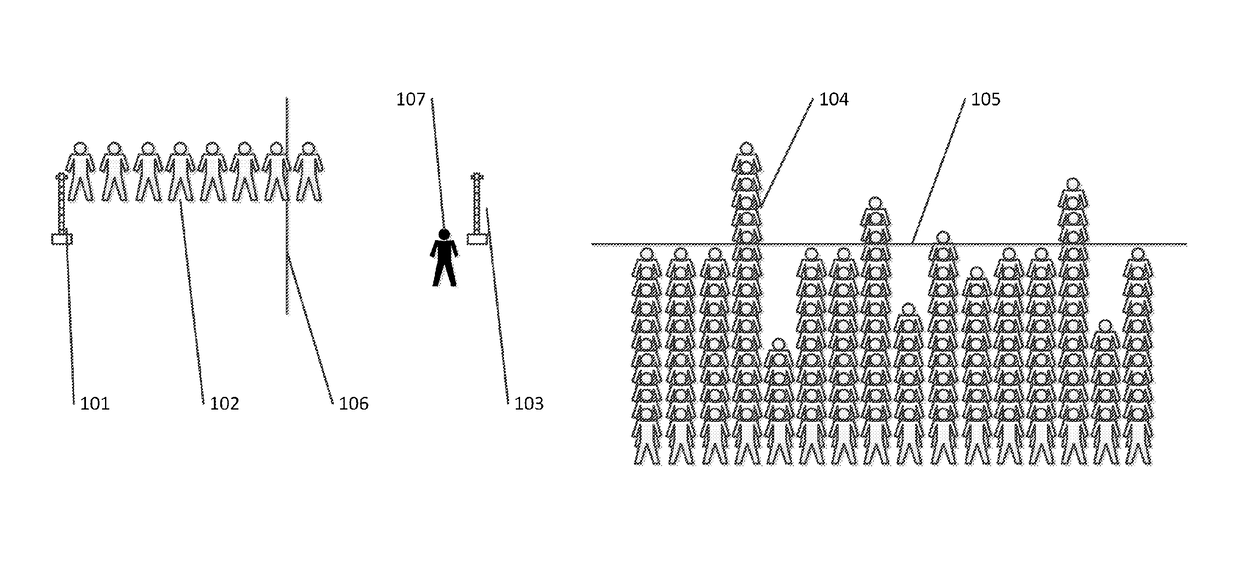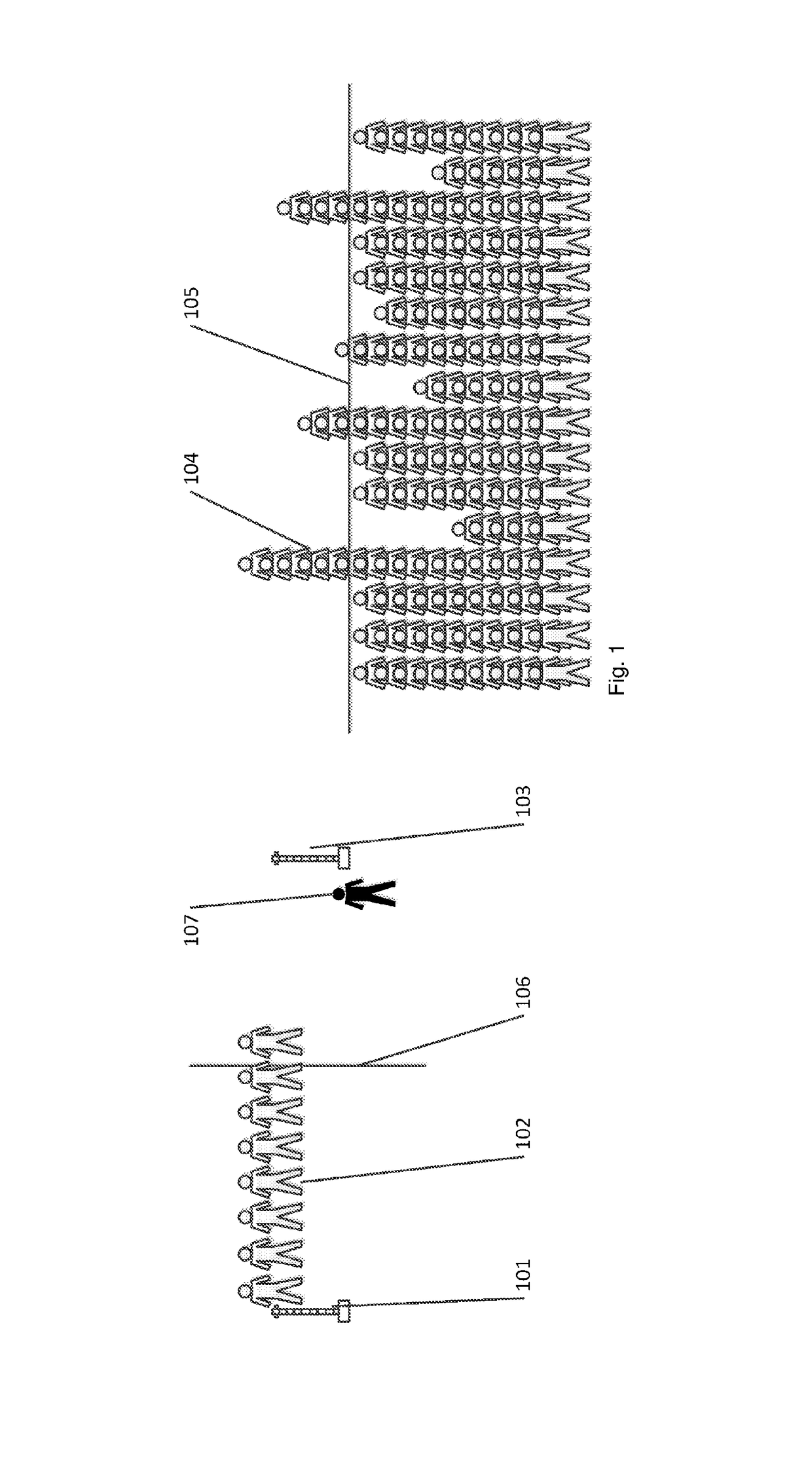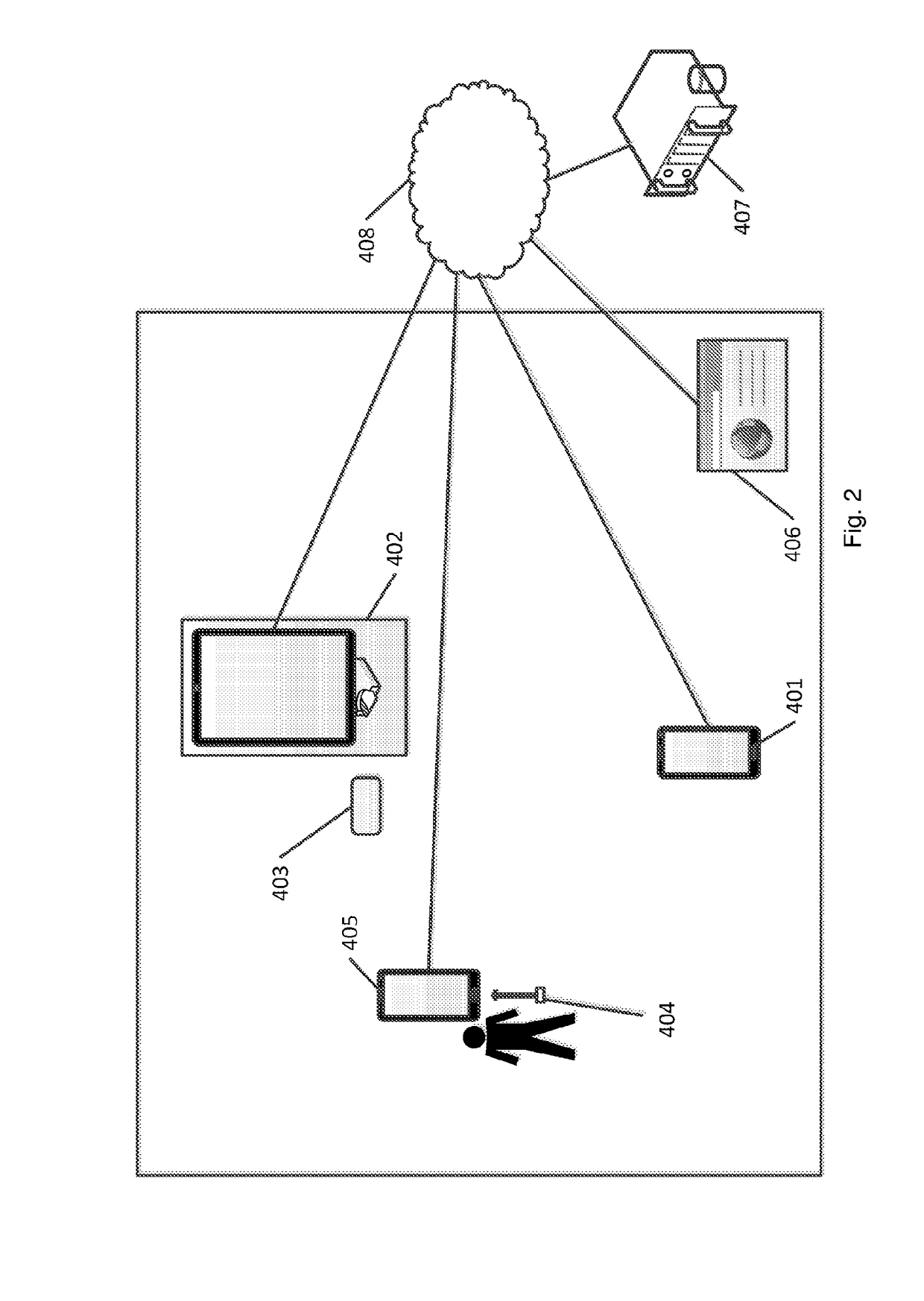Queuing system
a technology of queueing and queueing, applied in the field of queueing system, can solve the problems of guest resentment, increasing costs and complexity, and problems of second-line priority systems
- Summary
- Abstract
- Description
- Claims
- Application Information
AI Technical Summary
Benefits of technology
Problems solved by technology
Method used
Image
Examples
Embodiment Construction
[0041]With reference to FIG. 1, a schematic representing an allocation of guests (interchangeably referred to as users) in a virtual queue according to an embodiment is shown. The system includes an attraction entry point 101, a buffer queue 102, a barrier for entry to the buffer queue 103, and at least one virtual queue 104.
[0042]When a guest makes a reservation (the process for doing which will be explained below), they will be entered into a virtual queue 104. The throughput of the virtual queue (the number of guests per unit in time) will be determined by parameters in the system and will be arranged to have an average throughput 105. This is also set as a parameter of the queue and is, for example, a percentage of the maximum throughput of the ride. Guests are shown their reservation time either on their portable communication device or at a kiosk.
[0043]The guests in the queue may be moved around if necessary by the system as they can be waiting anywhere (for example in an amus...
PUM
 Login to View More
Login to View More Abstract
Description
Claims
Application Information
 Login to View More
Login to View More - R&D
- Intellectual Property
- Life Sciences
- Materials
- Tech Scout
- Unparalleled Data Quality
- Higher Quality Content
- 60% Fewer Hallucinations
Browse by: Latest US Patents, China's latest patents, Technical Efficacy Thesaurus, Application Domain, Technology Topic, Popular Technical Reports.
© 2025 PatSnap. All rights reserved.Legal|Privacy policy|Modern Slavery Act Transparency Statement|Sitemap|About US| Contact US: help@patsnap.com



